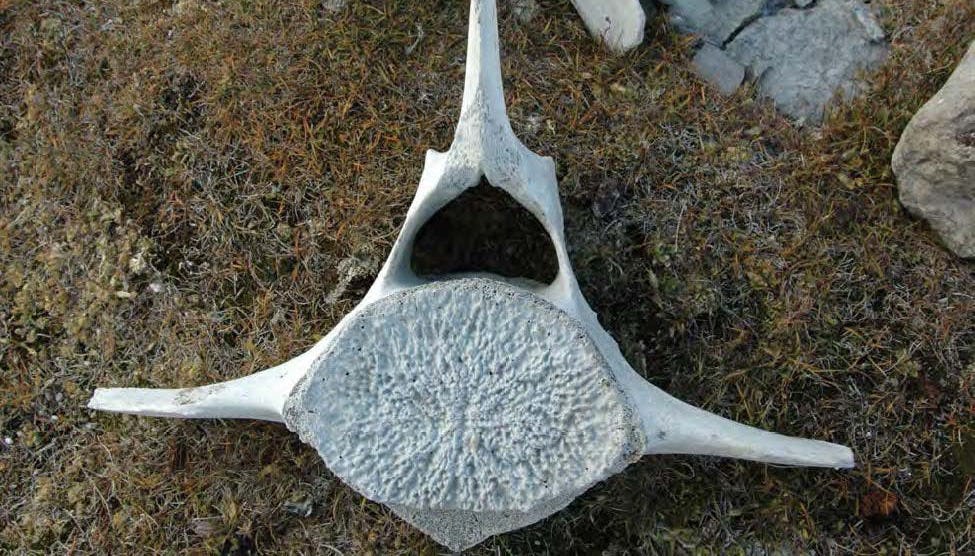Uncomfortable Inuk: Exploring Inuit Qaujimajatuqangit (Traditional Knowledge)

Supporting traditional knowledge in Arctic governance goes beyond empowering Indingeous language. Policy must also empower the worldview and values of traditional knowledge. Photo: The Gordon Foundation
Through a partnership with the Gordon Foundation, The Arctic Institute is publishing a series of papers on Canadian Arctic policy critiques and solutions written by Jane Glassco Northern Fellows. The Jane Glassco Northern Fellowship Program recognizes the leadership potential of northern Canadians aged 25-35 who are passionate about addressing emerging policy challenges and building a strong North. During the 18-month program, Fellows deepen their understanding of important northern issues, and develop the skills to articulate and advance their ideas and policy research. Fellows publish individual and group policy research papers. For more information, please visit The Gordon Foundation website and follow the Fellowship on Twitter.
As a product of colonization, I am an uncomfortable Inuk. Many people have questioned my ethnicity based on my appearance. Many have questioned my ethnicity based on the level of my Inuktitut language ability. I myself have questioned my inuuniq (Inuk-ness) based on my inability to meaningfully communicate with Inuit Elders, and thus, have found myself feeling as though I do not fully embody Inuit ways of being. I often wonder: am I really rooted in my experiences of Inuktut (language) and Inuit knowledge?
Inuit Qaujimajatuqangit (IQ): often referred to as Inuit traditional knowledge. IQ is about a set of values and practices, the relevance and importance of these, and ways of being and looking at things that are timeless.
Inuit Societal Values (ISV):Eight guiding principles that are used to guide the Government of Nunavut in the delivery of government programs and services
This very personal question is what drove me to focus my policy research on Inuit Qaujimajatuqangit, in particular within the Government of Nunavut (GN). Inuit Qaujimajatuqangit is referenced in many Government of Nunavut (GN) documents. There has been some significant work done to define Inuit Societal Values (ISV) within the Government of Nunavut, which some people may assume to be the epitome of Inuit Qaujimajatuqangit. However, Inuit Qaujimajatuqangit goes far beyond ISV. I wanted to further explore the intent and, more practically, application of Inuit Qaujimajatuqangit and ISV throughout the territorial government administration and delivery of territorial government services. Born and raised predominantly in Nunavut, I wanted to understand why I – like many of my peers – felt disconnected from my culture. In relation, I wanted to explore further the efforts of the Government of Nunavut¹through the creation of their first mandate, Pinasuaqtavut : That Which We’ve Set Out to Do : Our Hopes and Dreams for Nunavut, to ensure “Inuit Qaujimajatuqangit will provide the context in which we develop an open, responsive and accountable government”; and that “Inuktut, in all its forms, is the working language of the government of Nunavut.” More specifically, I wanted to explore how those efforts have influenced my experience and the strength of my roots to Inuktut and Inuit knowledge. Efforts in achieving the Nunavut dream for a territorial governance structure that is based on Inuit Qaujimajatuqangit, inclusive of language and culture, have waned. It is reflected through analysis of the Government of Nunavut’s first mandate in achieving the commitments mentioned above. This has led me to provide four recommendations on the basis of Inuit maligait.
Tina Piulia DeCouto is a Jane Glassco Northern Fellow and works for Nunavut Tunngavik Inc. (NTI), a land claims organization representing the interests of Inuit in the implementation of the Nunavut Agreement since 2014. Most recently, she has taken on the role of Director for Social and Cultural Development. Prior to that, she worked in the division of Inuit Employment and Training with a focus on Article 23, where the objectives are toward a representative public service, but a majority of her time was committed to playing a pivotal role in the establishment and operation of Makigiaqta Inuit Training Corporation. Tina greatly contributed to the development and approval of Makigiaqta’s Long-term Strategy and supported the Corporation in making its first investment in 16 Nunavut organizations.